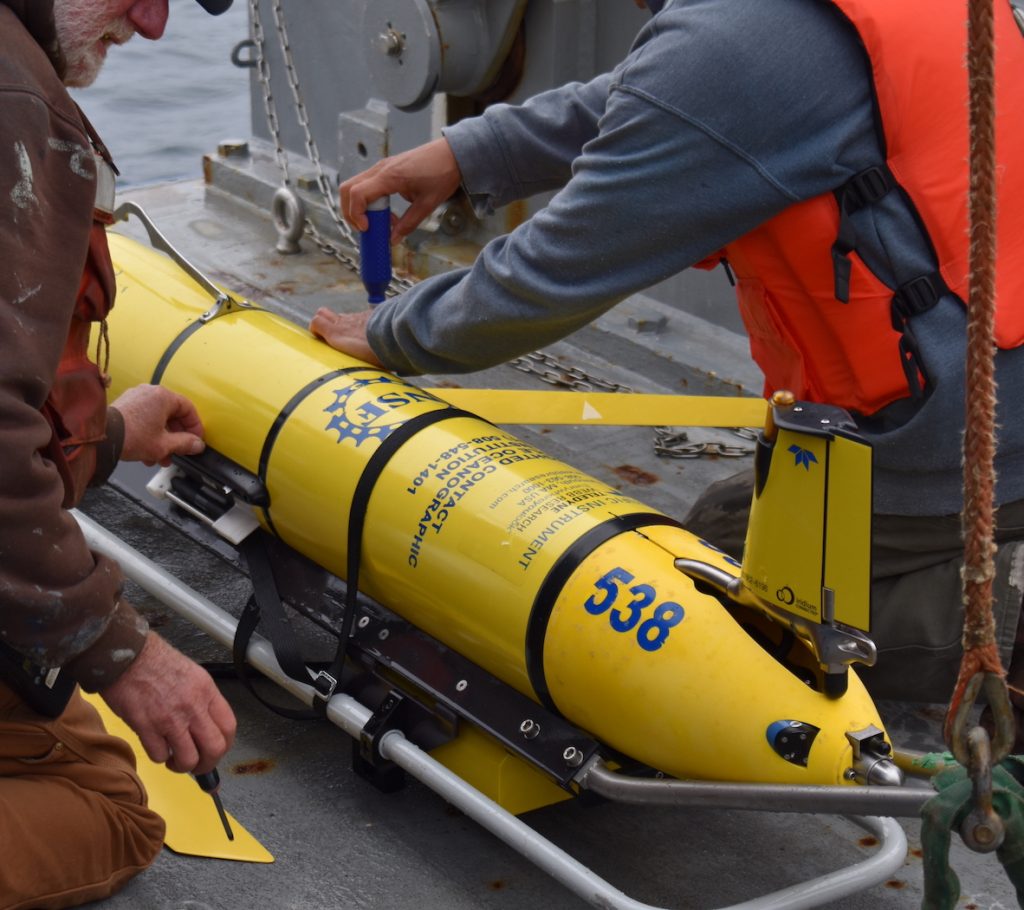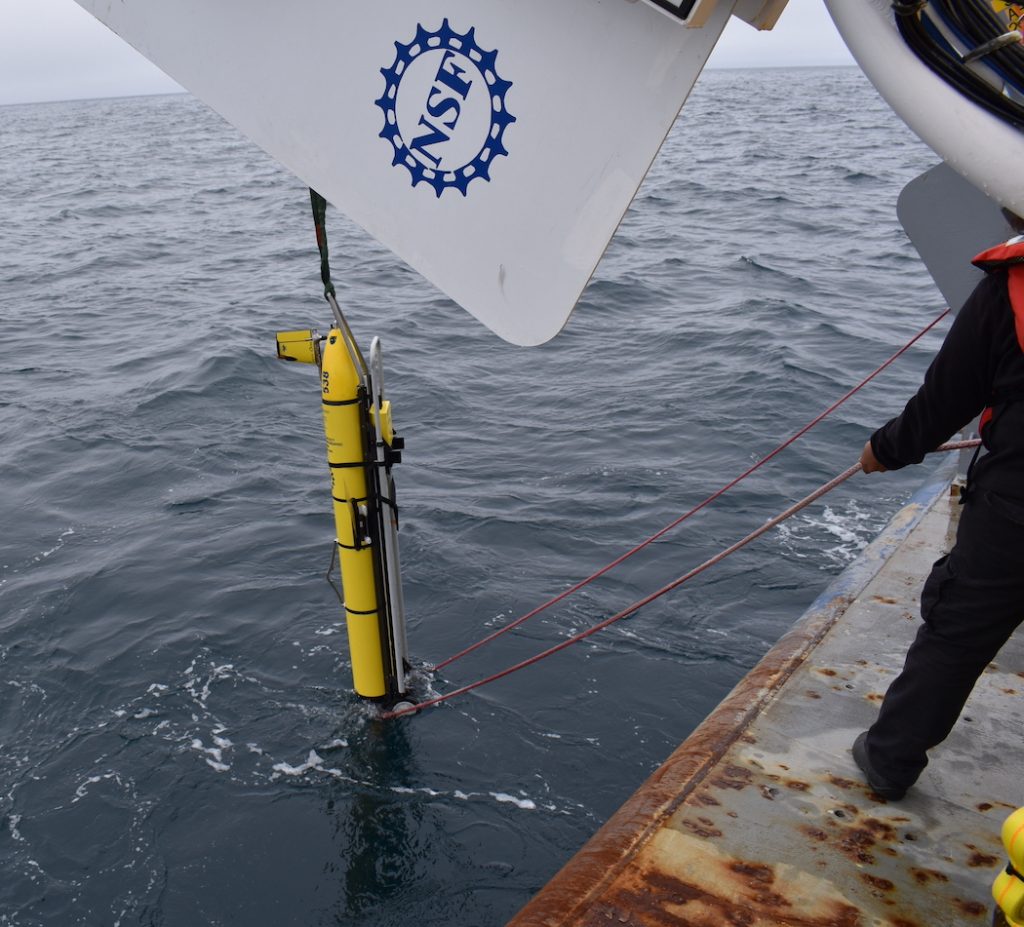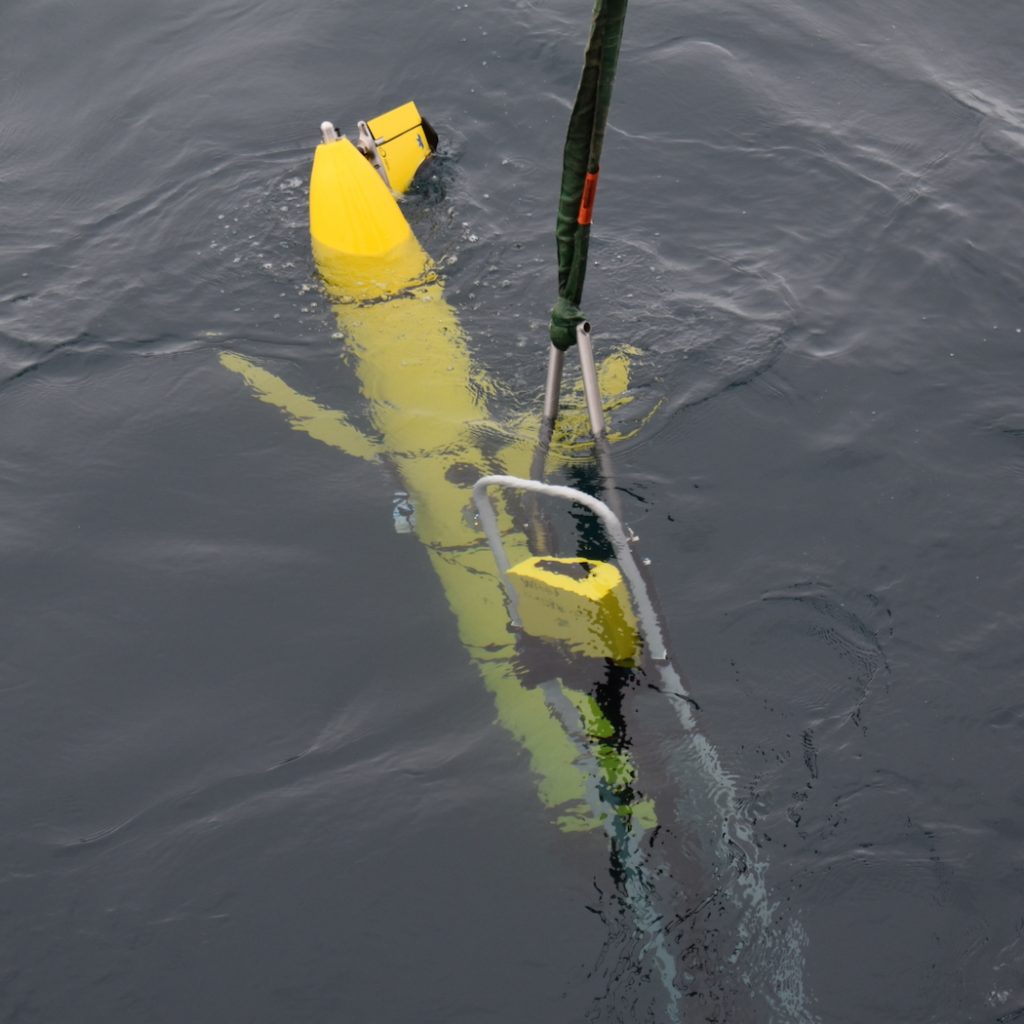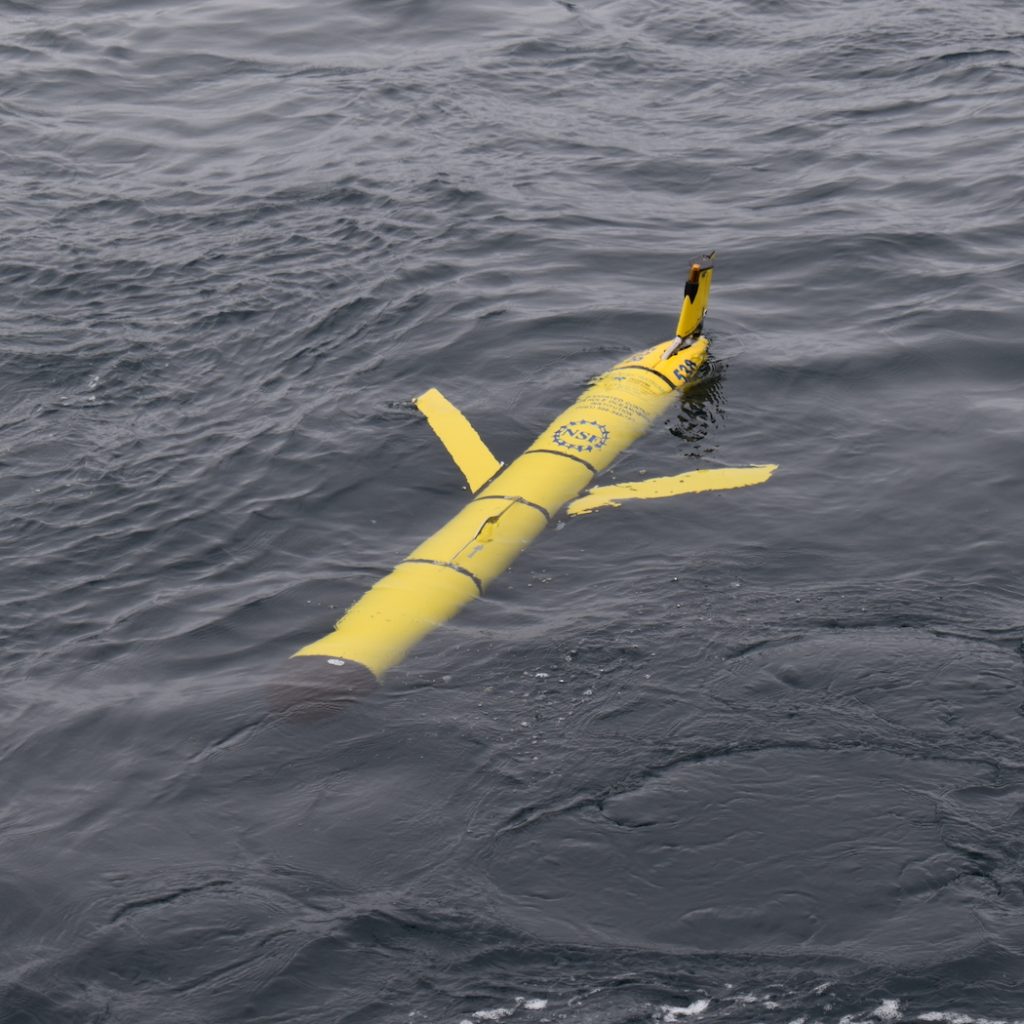Glider missions
The OOI Irminger Sea Array consists of three mooring sites in a triangular with sides ~30 km long. The Surface Mooring at one corner of the array communicates to shore via satellite. But the other three moorings (two moorings share one of the sites) do not have a surface expression, so they need another way to get their data to shore. Autonomous gliders are deployed at the array and their mission is twofold – 1) they travel around the triangular array to collect data (temperature, salinity, fluorescence and dissolved oxygen) in between the moorings, and 2) they also pass the data from the subsurface mooring to shore. Using an acoustic modem in the nose of the glider, they are able to communicate with the subsurface moorings using sound – which travels well in the ocean environment. When they come to the surface, they then send both their data and the subsurface mooring data back to shore via satellite.

The wings get installed on Glider 538 just before deployment. Credit: Sawyer Newman©WHOI.

Glider 538 being lowered in the water off the stern of the R/V Neil Armstrong in the glider launch cart. Credit: Sawyer Newman©WHOI.

As the glider is lowered into the water a float on the back side of the cart rises up releasing the strap holding the glider on the cart. From there, the glider then floats free of the cart and ship. Credit: Sawyer Newman©WHOI.

Glider 538 just after deployment. The tail houses the antennas to communicate via satellite back to shore. The acoustic modem is in the black nose cone. Credit: Sawyer Newman©WHOI.